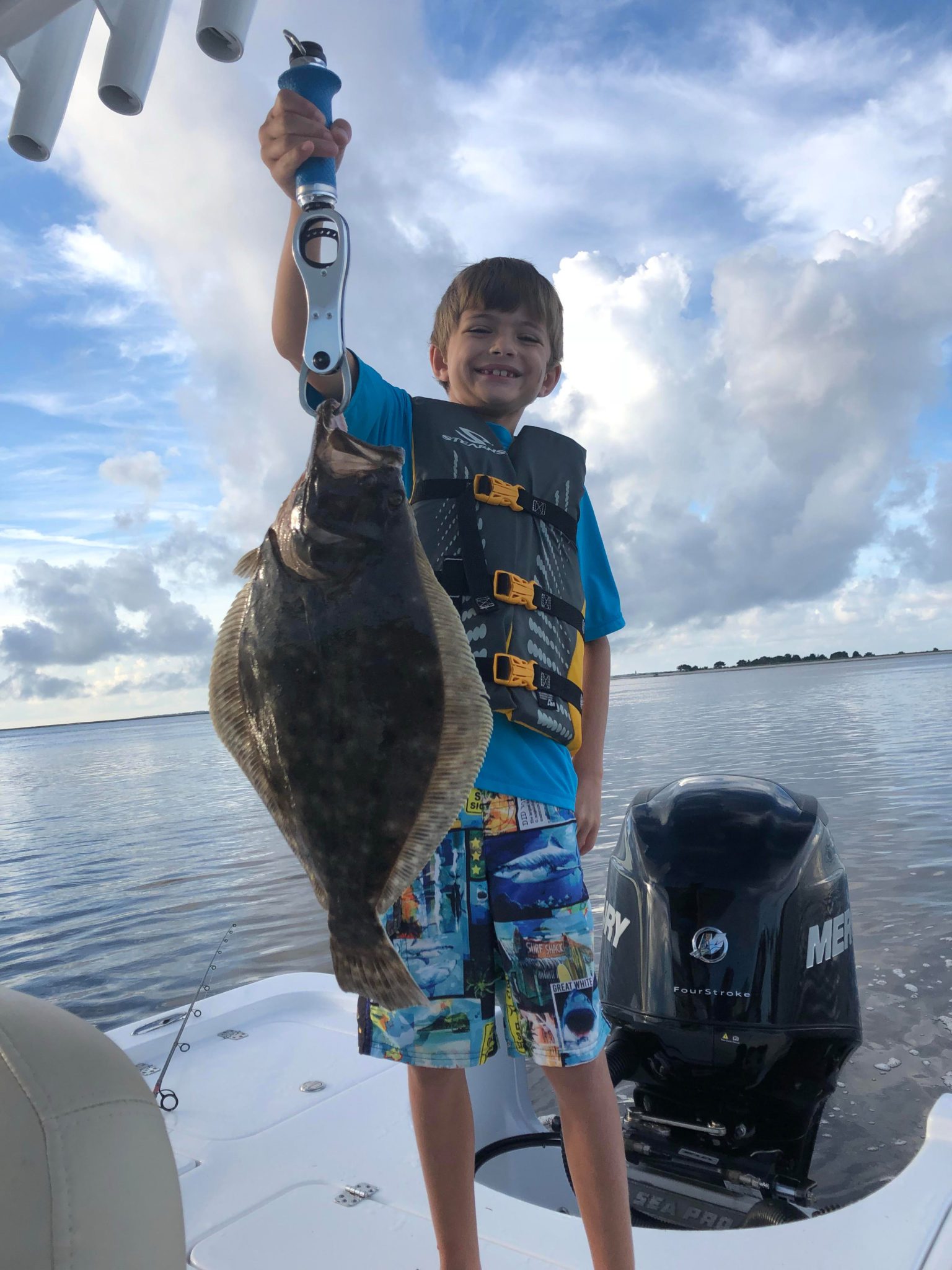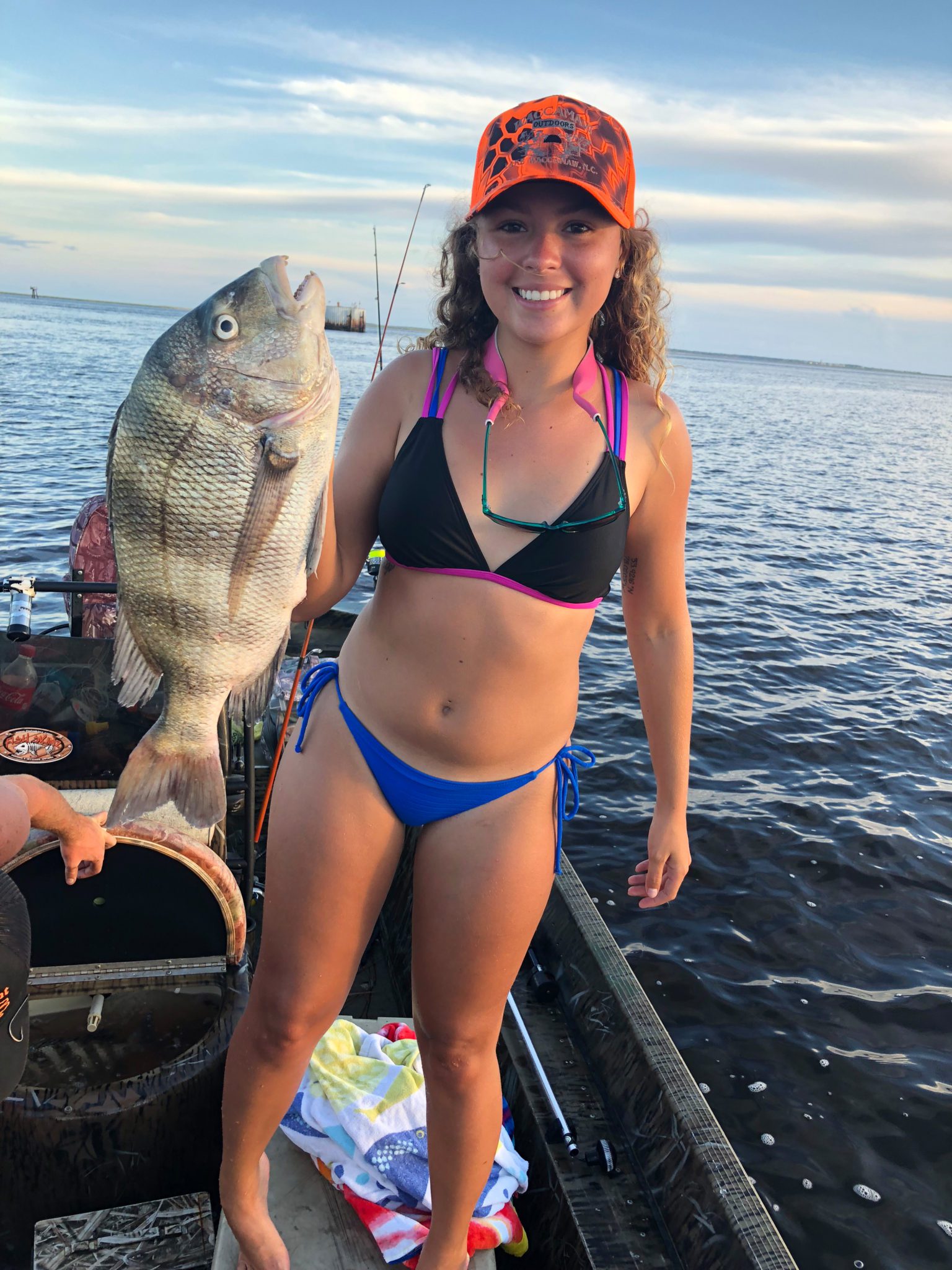Southport/Oak Island – Sep 13, 2018
Annette, of Dutchman Creek Bait and Tackle, reports that inshore structure has produced sheepshead as big as 9 lbs. The wall at Lockwood Folly and the waterfront have been good places to look, with fiddler crabs remaining the top choice for bait. Black drum can be found around the same areas.
Flounder are being caught in the backwaters and on the waterfront, but a lot of them have been throwbacks and small keepers.
The same has been true for the red drum in the area. Most of the reds have been slot-sized, but quite a few small fish are being caught as well.
In the suds, fishing has been slow other than some decent black drum. Bluefish are MIA, and only one small croaker has been reported.
The nearshore reefs are still producing flounder and red drum.
Offshore, kings are being caught here and there, with Mac-a-Hoos serving as the go-to bait. Most of the fish are coming from the waters out toward the tower, as there’s nothing very close to shore right now.
In the Gulf Stream, a few respectable sailfish are being caught, along with some scattered dolphin, but nothing has been hot and heavy.
Tim, of Wildlife Bait and Tackle, reports that the flounder bite has been really good inshore.
Redfishing has been productive as well, with plenty of slot-sized fish being caught. No big bulls have been landed yet, but they should be coming soon.
Black drum fishing has stayed consistent, and the trout action has been picking up nicely.
The surf has been producing some citation whiting and pompano.
Off the beach, spanish fishing remains productive, though king fishing has slowed down.

Grady Dunn (8), with his first flounder, a 20″ fish that was caught on finger mullet at the Southport Waterfront.
Mark, of Angry Pelican Charters, reports that the inshore flounder and redfish bite continues to be strong, and there’s plenty of bait around. The Lockwood Folly Inlet back to the river has been great on tide changes, with much cleaner ocean water pushing in over the last week or so.
With water temperatures cooling slightly, king mackerel are on the move, and you can look for them to show up much closer to shore any day now. Menhaden have been hit or miss with the kings, but cigar minnows behind Pirate Plugs or Big Nics should draw plenty of strikes over live bottom areas from the beach out to 18 miles.
Bait on the beach has been plentiful, and the last two weeks have seen the best spanish fishing of the season. Trolling green and red spoons are the go-to in shallower water, and in the 35-55’ range, live mullet on light tackle will produce bites over structure, which makes for a great fight.
The nearshore flounder bite remains strong, with a lot of keepers falling for Carolina-rigged mullet and live shrimp.
Luke, of Spot On Charters, reports that flounder and drum fishing in the Cape Fear River has been great, and the speckled trout bite has started to pick up as well (especially in the early morning and evening).
There has even been a strong presence of tripletails in the river, the likes of which hasn’t been seen in years. The tripletails swimming in the river can be found around surface structure such as crab pots and buoys, where Carolina-rigged live bait should draw strikes.
In general, a strong northeast wind has been pushing mullet into the river in droves, and the predatory fish are loving it.
Despite the influx of mullet, though, pogies have been the best bait for the flatfish and reds. The drum like the flash of a pogie in darker water. Most of the fish have been a little over 25”. Almost all of the big flounder being caught are coming from less than 2’ of water, and since that water has been incredibly clear, the flounder are biting hard and fast.
The tripletails swimming in the river can be found around surface structure such as crab pots and buoys, where Carolina-rigged live bait should draw strikes.
The best fishing for all species is still in the middle to lower Cape Fear. The salinity in the upper river is finally getting where it needs to be, but the big fish haven’t moved back in fully yet, though it’s only a matter of time before they do.

Kylie Creech brought this 20″ sheepshead over the rails while fishing in the lower Cape Fear River.
Robert, of Reelin’ Pelican Fishing Charters, reports that red drum and flounder have been the main targets over the past few weeks.
The reds are primarily being found on the falling tide, with finger mullet and peanut pogies providing the best action. Almost all of the fish caught have been in the slot, as the water temperature is still a little too high for the old drum that some of the eastern areas have been seeing.
The flounder can be found both inshore or nearshore, with the wind and tide pattern determining where to look.
Spanish are being caught nearshore as well, with finger mullet bringing in the biggest fish and Clarkspoons providing action on the smaller ones.
Kings have been biting in the 20 mile range, and bailer mahi have been mixed in with them. Cigar minnows have been working wonders, but live bait (when available) may work even better.
Ryan, of Fugitive Charters, reports that spanish mackerel in various sizes are swimming just off the beach. The smaller fish are tending to hit spoons, and the bigger fish prefer mullet.
A few big reds have started to show up near the beach, and there are still plenty of flounder to be found on nearshore structure and just inside the inlets.
Kings should be showing up alongside the small spanish and ribbonfish on the nearshore reefs, so look for that bite to pick up very soon. Currently, they can be found to the south near the 90s and offshore in 80’+ of water.
The wahoo are starting to bite better offshore, and there have been quite a few sailfish caught and released inshore of the Gulf Stream.
Steve, of Ocean Crest Pier, reports that the water has cleaned up quite a bit, and spanish (3-4 lbs.), bluefish, trout, flounder, and black drum are all being pulled up. Most of the fish are biting shrimp early in the morning.
